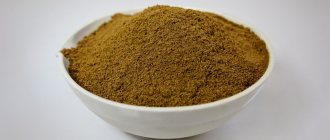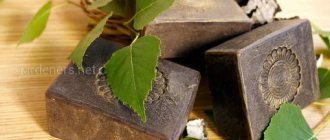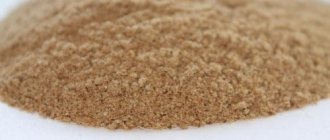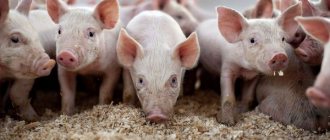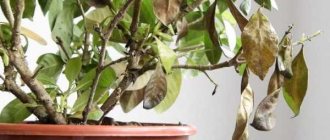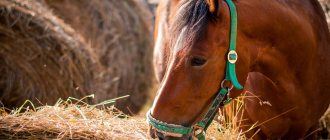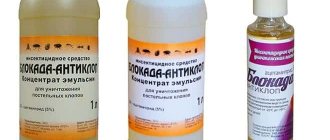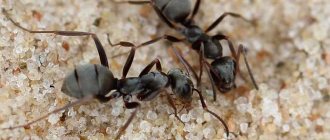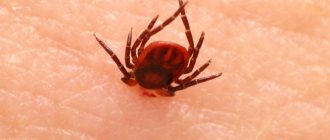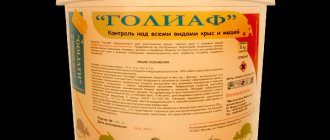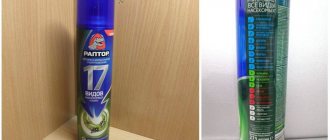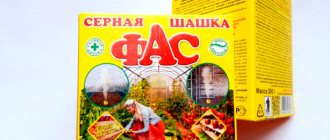Category: Organic fertilizers Reading time: 7 min · Views: 3,117
Bone meal has been used as an effective fertilizer for a long time. But lately they have undeservedly begun to forget about her. Perhaps this happened due to the rapid development of the chemical industry. However, this type of fertilizer has many advantages.
Description
Bone meal is an organic type of fertilizer that is considered safe. It is a product of processing the bones of birds and animals. The raw materials for its production are purchased from meat processing plants. It has the appearance of a light brown powder.
There are two ways to get it:
- Raw bones are crushed and ground to form a powder.
- The bones are boiled to extract fat, then they are steamed under pressure to extract glue. They are then ground to a powder.
Production Features
In South and Latin America, fishmeal is produced in huge quantities. Manufacturers sell it to many countries around the world. This fertilizer is also imported to Russia.
But compared to flour made from animal bones, fish feeding is not yet particularly popular among Russians who produce fruits, vegetables and berries. But in agriculture, when raising cattle, pigs, and poultry, it is used as a nutritional supplement for complementary feeding.
To produce organic fertilizer, bones and soft tissues of all types of fish are used. The content of proteins, fats, and easily digestible proteins makes organic fertilizer indispensable when raising animals and birds.
In the production of garden and vegetable products, fertilizing is highly valued for its high nitrogen content. Phosphorus in it is no more than 16%. All elements are absorbed over a long period of time, so one feeding is sufficient during the growing season. Fish bone meal is especially valuable and indispensable during flowering.
Compound
Bone meal is a source of a large number of elements. Depending on the method of its production, it may contain from 15 to 23% phosphorus and calcium. The largest amount of phosphorus is found in low-fat products.
Today, this type of fertilizer is most often produced by the cooking method, so the nitrogen concentration in it is no more than three percent.
We advise you to read: Features of using dolomite flour in the vegetable garden, greenhouse and flower garden.
In addition, this product contains the following micro- and macroelements:
- Iron;
- Iodine;
- Copper;
- Cobalt;
- Manganese;
- Sodium;
- Magnesium;
- Potassium;
- Zinc;
- Manganese;
- Copper.
Bone meal for gardening is primarily a phosphorus fertilizer. Phosphorus helps strengthen the root system, improves flowering and contributes to a better harvest. And a large number of useful micro- and macroelements increase the immunity and resistance of plants to bacterial infections, pests and diseases.
What can be replaced
Bone meal, rich in phosphorus and nitrogen, can be replaced with fish, horn-hoof, armor or blood powder. The technology for preparing these types of fertilizers is similar to phosphonitrogen, and their benefits are the same.
Bone and fish-bone meal can be replaced with superphosphate, and horn-tooth meal with ammonium nitrate.
Advantages
Concentrated fertilizer that does not require dilution. Considered safe and inexpensive. It is allowed to apply even a few weeks before harvest.
The use of bone meal as a fertilizer can significantly improve the composition of the soil after just six months. It becomes softer and more nourishing.
Bone meal has the following effects on plants:
- Plant growth is activated, they develop better;
- Productivity increases;
- Plant roots become stronger and develop better;
- Flowering improves;
- The use of bone powder has a positive effect on shoot growth and fruiting.
Soil enriched with bone meal allows the crop to avoid oversaturation with pesticides. Since phosphorus does not dissolve in water, the fertilizer is absorbed by plants slowly and gradually. And fertilizing remains effective throughout the entire growing season.
The advantages of this type of feeding include safety in case of possible overdose. This will not have any negative impact on the soil or plants. In addition, bone meal has no odor at all and does not require special storage space.
Bone meal should not be used to fertilize soil in which crops that prefer acidic soil will grow. This type of fertilizer can deoxidize the soil.
Pros and cons of fertilizer
The chemical composition of the fertilizer makes it very useful and causes wide distribution. Due to the high concentration of phosphorus, the presence of potassium, calcium, and nitrogen, bone meal stimulates the development of the root system and increases resistance to various diseases.
Pros:
- Thanks to timely fertilizing, you can achieve abundant and long-lasting flowering of garden plants. Various varieties of roses are especially partial to fertilizer;
- tomatoes, onions, garlic, zucchini, sweet peppers, potatoes respond well to feeding with bone meal;
- phosphorus and other chemical elements are contained in the fertilizer in a bioavailable form and are easily absorbed by plants;
- bone meal is quite cheap, which increases its popularity;
- the product is natural, environmentally friendly;
- mixes well with soil, dissolves in water, decomposes for a long time, ensuring the supply of microelements over a long period of time.
Minuses:
- not suitable for slightly alkaline and alkaline soils with a pH above 7, since it “works” only in slightly acidic soils;
- on soils rich in phosphorus, bone meal causes an overdose, which leads to oppression and diseases of the root system, slower growth, yellowing of leaves (but this is more a matter of improper application than a lack of fertilizer);
- the persistent smell attracts animals - dogs, cats, rodents. The former can get poisoned if the fertilizer is not incorporated into the soil; rats and moles can ruin the plantings;
- Blood meal is banned in some countries due to the risk of transmitting mad cow disease.
Use of bone meal
Most often, bone meal is fertilized in the fall. The decomposition period of this fertilizer lasts about seven to eight months, which allows the nutrients to pass into a form convenient for absorption.
It is enough to apply once a year. However, some experienced gardeners believe that using bone meal once every three years is sufficient to maintain soil fertility.
Tomatoes
Growing vegetable crops requires more bone powder. Due to the calcium and potassium in the composition, this type of feeding will make tomatoes several times tastier. It can be applied when planting in spring or autumn. In this case, 50 grams of fertilizer should be placed in each hole.
Bone meal is also used in preparing tomato seedlings. It enhances root growth and also helps seedlings absorb nutrients such as nitrogen, calcium and potassium. This allows plants to more easily tolerate transplantation into open ground, as well as sudden temperature changes in the spring. Tomatoes begin flowering and fruiting earlier.
Potato
To grow potatoes, it is recommended to add bone meal during digging in the fall, since placing it in each hole takes too much time. Fertilizer is applied to potato fields and country beds in an amount of 300 to 500 g per square meter. This feeding promotes the accumulation of starch and sugars in the tubers, increasing their quantity and size.
Roses
For potatoes and roses, not only bone powder is suitable, but also fish meal, since it contains more nitrogen.
In order for roses to take root well, when planting, you need to add from 50 to 100 grams of bone meal to each hole. It is enough to fertilize adult bushes once every three years. To do this, it is necessary to apply fertilizer to the root zone in the same amount as when planting. Then the roots need to be mulched.
Strawberry
When preparing new beds for planting strawberries, bone meal can be added both to each hole and when digging the beds. In the second case, you will need 300 grams per square meter. And you should add 20-30 grams to the holes for each seedling. Adult plants will benefit from feeding during the flowering period or after fruiting.
Bulbous plants
Bone powder is often used for bulbous flowers, as it stimulates root growth and helps strengthen the bulbs. To do this, fertilizer in an amount of 20-30 grams is mixed with the soil. After this, the plant bulb can be planted in the hole.
Fruit trees and berry bushes
When planting berry bushes in a hole, you need to add 50-100 grams. Adult plants need fertilizer in the same amount every three years. This feeding is also useful for shrubs to restore strength after fruiting in preparation for winter.
Fruit trees are fertilized in large doses - 200-250 grams when replanting a tree, and also once every three years.
Houseplants
To prepare the soil that will be used for replanting indoor flowers, add one gram of bone powder per kilogram of soil. This ratio will facilitate easier adaptation of flowers to new conditions and will have a beneficial effect on flowering.
Norms and methods of application by crop
Before using phosphonitrogen, be sure to examine the soil in the area for acidity.
On a note! Every gardener and gardener must know the pH of the soil on the site in order to apply any fertilizers according to the parameters.
Flour is not added to alkaline and neutral soils; it is mandatory to use on acidic soils - to balance the composition and deoxidation.
Directions for use:
- for digging (dates - autumn or early spring);
- in holes or planting pits before planting seedlings;
- embedding into the ground with a rake (usually this method is recommended for greenhouses so as not to turn the soil over);
- in liquid form as a solution.
The powder is not recommended to be mixed with mineral fertilizers. But the combined use of phosphonitrogen with poultry droppings, humus, and compost is allowed. Good results when applying the additive are obtained on poor soils.
The table shows the norms and methods for applying bone powder to various crops.
| Cultures | Methods, application rates | Deadlines | Notes |
| Tomatoes |
| Spring, autumn | |
| cucumbers |
| Spring | |
| Potato |
| Spring | |
| Strawberry |
| Spring, autumn | Liquid fertilizing is allowed during the growing season |
| Flowers | In the holes before planting, 2 tablespoons of the additive | Spring, early summer | |
| Fruit trees | During planting of seedlings. 2-3 cups per hole with mixing with soil | Spring, autumn | |
| Berry bushes | During planting of seedlings. One glass per hole with soil mixing | Spring, autumn | |
| Lawn | Incorporation into the ground when preparing the area for sowing lawn grasses. 2-3 large glasses per 1 square meter | Spring | Embed into the ground using a rake; no powder is left on the surface. |
Liquid feeding with bone meal is indicated for tomatoes, eggplants, sweet bell peppers, and cucumbers. This fertilizer is especially suitable for heavy soils. Reviews from summer residents say that productivity increases and the taste of fruits improves.
But we must remember that the supplement acts slowly, so you should not expect immediate results. This is a long-lasting fertilizer, so to achieve an immediate effect (for example, with a critical lack of phosphorus in plants), mineral compositions are recommended.
When adding phosphonitrogen to the mixture, humus or mullein, flour, and coarse river sand are used. Proportion: 1:2:3. Chicken manure is also added to the mixture, the proportion will be: 1:2:3:1.
Liquid fertilizer
There is another option for using bone meal as a plant feed. To prepare liquid fertilizer you will need:
- Bone meal – 100 grams;
- Hot water - two liters;
- Cold - 4 buckets.
The flour is poured with hot water, the mixture must be kept for at least a week, stirring it regularly. After this, the mixture should be filtered and diluted with cold water in the amount of four buckets. Using liquid fertilizer a few weeks before harvest will make vegetables and berries much tastier.
Bone meal is a useful fertilizer with a rich composition, however, it should be supplemented. For example, when planting plants in spring, bone fertilizing alone is not enough, since at the very beginning of its life the plant requires a lot of nitrogen. Therefore, along with bone meal, you should add other organic fertilizers that are rich in nitrogen.
Storage
Since bone meal is a natural animal product, storage conditions and periods should be carefully observed. On the fertilizer packaging, manufacturers indicate the date of manufacture and exact terms of use.
Do not use expired additives! Place bags of flour in a ventilated area, avoiding moisture and direct sunlight. Poor-quality fertilizer acquires a putrid or musty odor and is not suitable for use.
Homemade bone meal
You can make this fertilizer yourself. It is best to use beef bones for this.
Manufacturing process:
- First you need to clean the bones from any remaining fat and meat, then boil them for two hours.
- Then bake the bones so that they become brittle at a temperature of 200 degrees.
- After they have cooled completely, they need to be placed in a fabric bag and crushed as finely as possible with a hammer. It is advisable to grind them to a powder state.
- Place the finished product in cloth or paper bags and store in a cool and dry place.
Results of proper application
Phosphonitrogen is applied to the depth of the arable layer - 25–35 cm, closer to the roots of the plants.
It has the greatest effect on soils:
- acid soddy-podzolic;
- gray forest;
- leached chernozems.
To prepare mineral mixtures (fat), mix with the following fertilizers:
- nitrogen - ammonium nitrate or urea;
- potassium - potassium chloride or potassium salt.
It is used to prepare composts with organic fertilizers that have high acidity - peat or manure. The acid in organic fertilizers is involved in the decomposition of phosphonitrogen and the release of available phosphorus.
Varieties
The name “bone meal” also refers to all organic fertilizers that are made from the tissues of animals and fish.
Fish flour
It is made from soft tissues and bones of various types of fish. This fertilizer contains a lot of phosphorus - about 16%. It also has a high protein content, which makes it possible to use fishmeal as a feed additive in livestock farming.
Horn shavings
Horn shavings or horn-hoof meal are a type of bone meal made from horns and hooves. It has a high nitrogen content, about 10%. Unlike bone and fish meal, it is used as a top dressing every season.
Blood meal
This type of organic fertilizer has the highest concentration of nitrogen (13%), which can significantly stimulate the growth of green mass. The content of phosphorus and potassium in blood meal is low. For this reason, it must be mixed with regular bone meal to achieve greater effectiveness.
The dosage should not be exceeded, as this may have a detrimental effect on the plants.
Blood meal can change the acidity of the soil, as it has an increased concentration of nitrogen. Therefore, it is better to use it to fertilize soil with a high alkali content, which will ensure balance.
Pantsirnaya
This exotic species is widely used in southern countries. It is made from the shells of crustaceans, which are ground into powder.
Bone meal is a useful organic and safe fertilizer that contains a large amount of useful substances. It allows you to strengthen the plants and get a better, larger and tastier harvest.
How to make your own bone powder
You can easily grind animal bones at home without the use of industrial equipment and without special skills.
Selecting a location
The bones are burned in an open-air area. When burned, raw materials emit an unpleasant odor, so it is not recommended to heat treat them indoors.
How to prepare the bones
Before firing, the bones are cleared of soft tissue. You can scrape them off with a knife or boil the raw material until tender, then the meat and tendons can be easily removed.
After cleaning, make a fire. Firewood from hardwood is used (coniferous is not used, otherwise the finished product acquires a characteristic odor and is impregnated with resin).
Burning
The firewood is placed in a place prepared for the fire and set on fire. They must burn completely because the bones are burned in coals. A layer of bones is laid out on hot coals (large ones are pre-crushed). Cover the top with a layer of wood chips and branches.
After the fire has cooled, the bones are removed. If they crumble easily when pressed, the product is ready. Bone heads are placed in a thin layer in a bag and crushed with a rolling pin.
What bones are suitable for making organic flour?
To prepare phosphorus fertilizer in the form of flour, take the bones of cattle and poultry.
Small and large parts of the skeleton, skull, horns and hooves are suitable for processing. All of them will subsequently be crushed to a fine powder.
From raw bones a powder rich in nitrogen is obtained, and from burnt bones a powder rich in phosphorus is obtained.
In regions close to large bodies of water, fertilizer is prepared from fish skeletons. It is not inferior in quality to cattle bone powder. The technology for preparing fish feed is similar.
Recommendations from experts
Experienced gardeners and gardeners advise adding bone meal, taking into account the type of soil and crop. When using this fertilizer, you should follow the recommendations of specialists:
- Bone meal can be reapplied no earlier than after 20 days to avoid overdose. The minimum interval between uses of blood powder is 2 months.
- At the beginning of the growing season, plants require a lot of nitrogen, which is not enough in flour. Therefore, it is necessary to supplement the fertilizing with urea or ammonium nitrate. It is impossible to apply bone meal and nitrogen-containing fertilizers at the same time, since the active substances lose their potency due to pH differences. They turn into compounds that are inaccessible to the roots.
- Before using dry powder, the soil should be well moistened.
- The blood product contains little phosphorus and calcium, so it is better to mix it with bone product.
- Shell flour contains salt, so its use on clay soils is undesirable.
- Bone meal reduces soil acidity. Therefore, it is recommended to add it along with chalk or eggshells. Crops that prefer acidic soil cannot be fertilized with flour. The best effect is observed on alkaline soils.
- It is useful to introduce meat and bone waste into swampy soil to replenish it with copper.
- Phosphorus dissolves better in slightly acidic soil. Therefore, it is recommended to mix bone powder with peat, which has a low pH level.
- To prevent plants from experiencing a lack of potassium, which is low in bones, additional chicken manure is added.
- To increase efficiency, bone meal must be mixed with various useful components: ash or eggshells in a 2:1 ratio.
Important!
In the spring, organic fertilizer is applied when warm weather sets in and return frosts are no longer expected.
